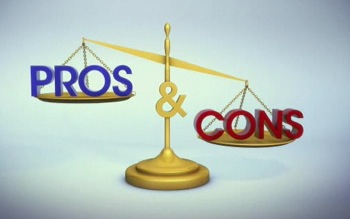Downsides of artificial turf on LGUSD elementary school fields
The downsides of using artificial turf outweigh the upsides. Image from aprilsmith.org.
Go here to review the downsides to using artificial turf on campus areas OTHER than the play fields.
Question whether motives for installing artificial turf outweigh these compelling reasons to dismiss artificial turf, especially given that alternatives are within reach...
- WATER USE UNDERESTIMATED - Uses water for cooling, cleaning, maintenance. Required to maintain warranty.
- MAINTENANCE UNDERESTIMATED - Needs continual cleaning of dried-on sweat, spit, blood, vomit, dog poop/pee, bird poop, food, gum. Sweeping/leaf blowing. Brushing to keep pile up. Repairs. Requires regular testing of surface and infill hardness for SAFETY. Warranties have restrictions inconducive to elementary school multi-use fields (no lawn chairs, no staking of bounce houses or tents, discourage food and beverage, etc.)
- HEAT ISLAND - Heats campuses, kids can’t play on it on hot days, endangers surrounding trees, affects insects/wildlife. Burn and heat stroke risk. The surface temperature can be 40 to 70 degrees higher than air temperature depending on weather conditions and time of day.
- TURF INJURIES - Heat, twisting/torque ('sticky'ness hinders rotation), harder on joints, concussion, turfburn/friction (raw and limb-length, exacerbated by heat, humidity, sweat, and prior injury; frequent reinjury and infections; increased risk of MRSA). Foot & ankle injury is twice as high on artificial turf as on grass. ACL and knee injury rates also significantly higher. Concussion studies confirm that younger children are most vulnerable to brain injury as their development continues, in addition to having thinner skulls and less developed neck muscles to support the head during a fall or impact. Frequent industry misrepresentation of reputable studies, e.g., by picking their own cohorts from the data to reach different results.
- LAWSUITS FOR INJURY/DEATH - Heat-related. Slip-and-fall injuries when playing on wet surface or in rain. Risk of retroactive liability claims as safety of field comes into question.
- TOXICITY - Toxins found in infills marketed as "plant-based", lead in the "grass blades", PFAS "forever" chemical bioaccumulation, methane and ethylene off-gassing. All elements of the turf with use and extended weather exposure can break down into microscopic particles forming an unhealthy respirable dust. Independent, peer-reviewed, published studies raise the alarm on types of toxins, their concentration, and their synergies. Absence of proof of harm is not proof of absence of harm.
- MICROPLASTIC & INFILL RUNOFF INTO WATERWAYS - Causes water pollution & endangers aquatic life.
- LACK OF RECYCLING - Industry concedes there are NO recycling plants in the US. What do we do with tons of plastic and infill every 8-10 years?
- ELIMINATES DAILY CONTACT WITH NATURE for increasing number of kids who don't get that in LG's dense housing developments.
- CONTRADICTS EVERYTHING WE HAVE BEEN TEACHING OUR CHILDREN ABOUT PLASTIC - Artificial turf is considered a non-essential single-use plastic. Refuse it.
- COST - $1M more than a new natural grass field + $600K+ every 8-10 years to replace.
- SUMMARY: Natural grass is safer, softer, cooler, and cheaper than artificial turf.
